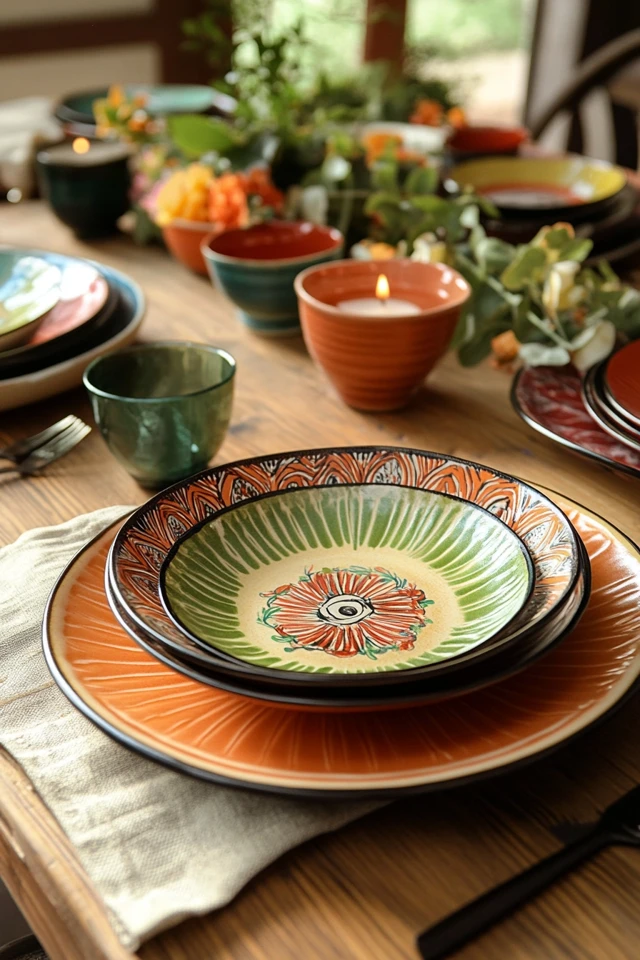Introduction
Creating a rustic tablescape is all about blending charm, warmth, and personality to make every meal feel special. One of the best ways to achieve this is by mixing and matching farmhouse-style dinnerware. With their earthy tones, vintage-inspired patterns, and natural materials, farmhouse dinnerware pieces are perfect for crafting a table that feels both inviting and unique.
I still remember the first time I experimented with mixing dinnerware for a family gathering. I combined a set of white, scalloped-edge plates with mismatched vintage saucers and mason jar glasses. To my surprise, the varied pieces came together beautifully, creating a relaxed yet cohesive look that everyone loved. Since then, I’ve embraced the art of layering dinnerware, incorporating different textures, colors, and patterns to match the mood and season.
If you’re ready to elevate your table with a touch of farmhouse charm, this guide will show you how to mix and match dinnerware for rustic tablescapes that are perfect for every occasion.
The Perfect Design for You
Mixing and matching farmhouse dinnerware is perfect for anyone who loves the idea of a relaxed yet polished table setting. Whether you’re hosting a cozy dinner for two, a holiday feast, or a casual brunch with friends, this design approach allows you to showcase your creativity and personalize your tablescape.
Picture a wooden dining table adorned with linen napkins, a simple centerpiece of fresh flowers, and layers of dinnerware featuring earthy tones, delicate patterns, and handcrafted details. By mixing and matching your pieces, you can create a table that feels authentically you—full of character, warmth, and rustic charm.
Picture Gallery
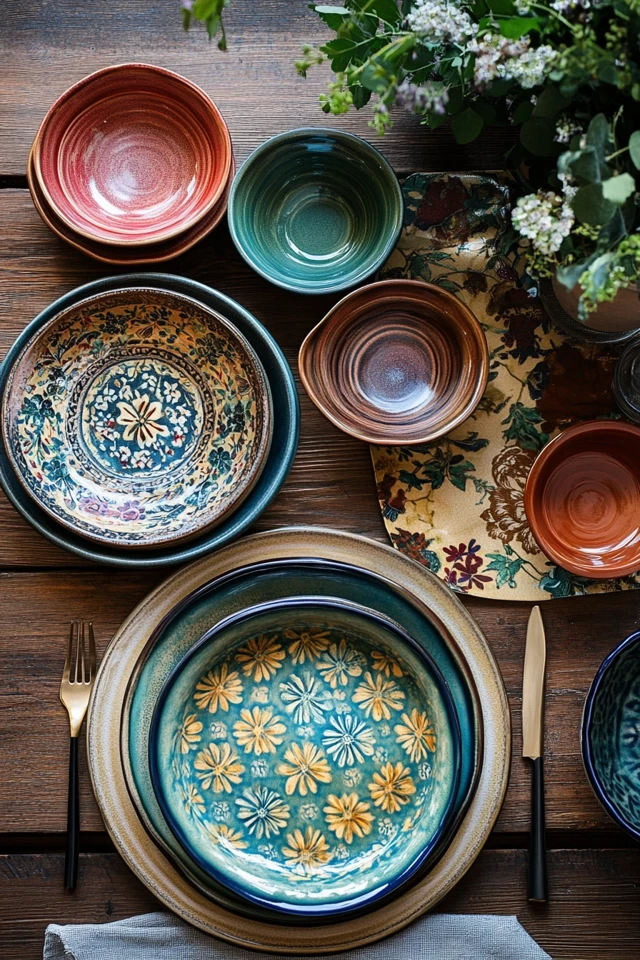
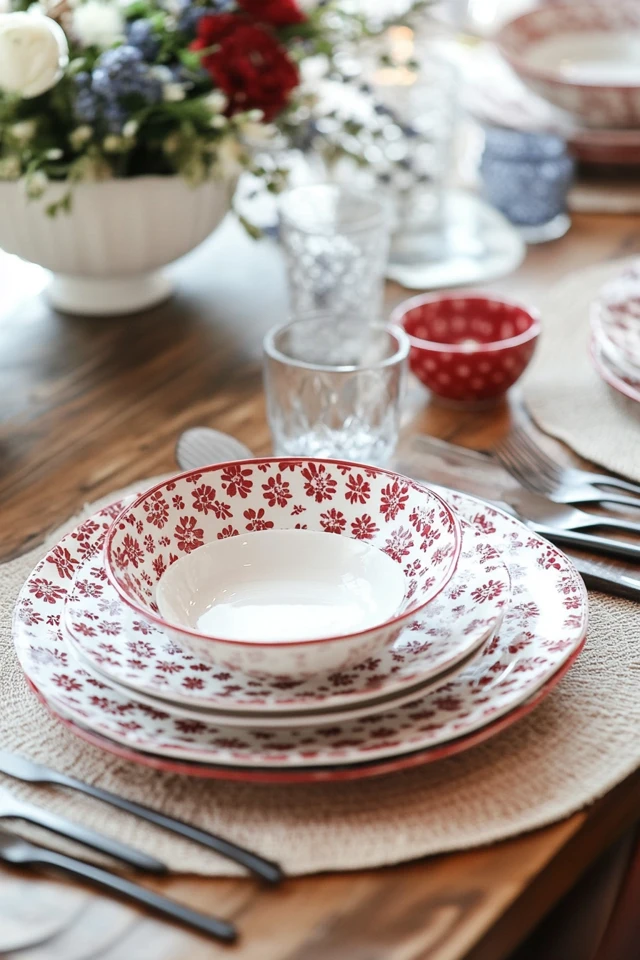
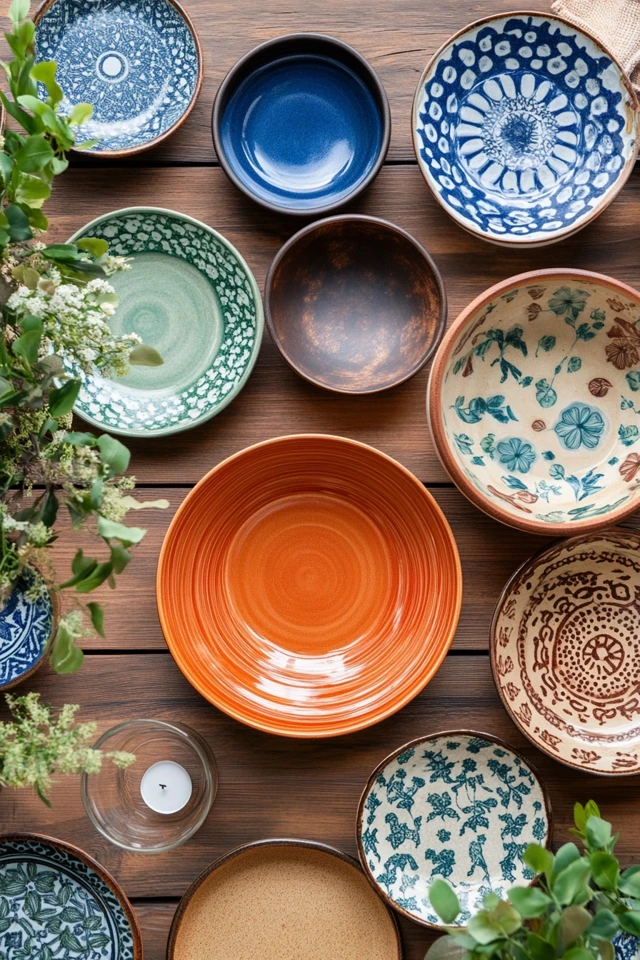
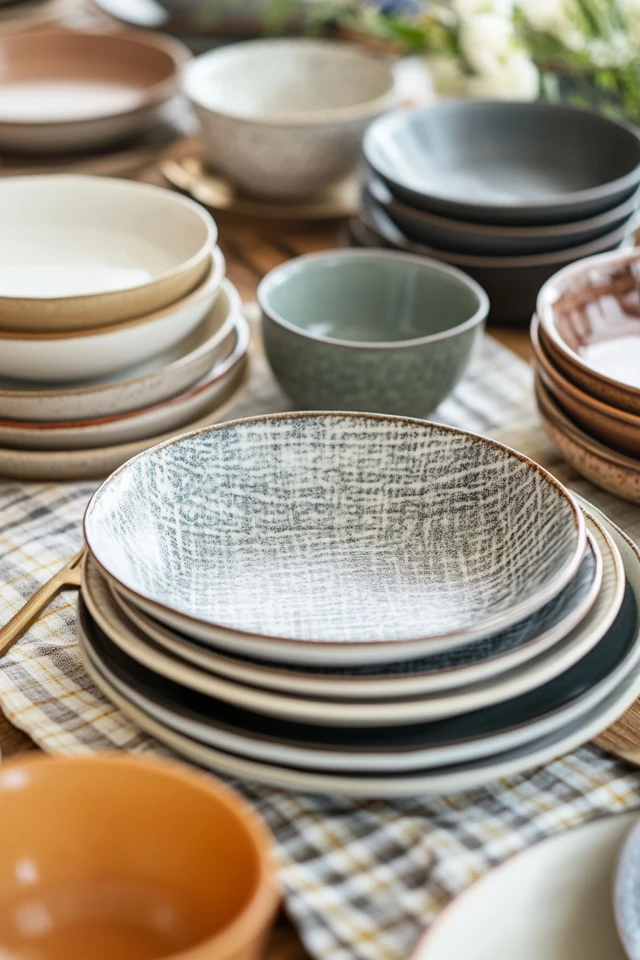
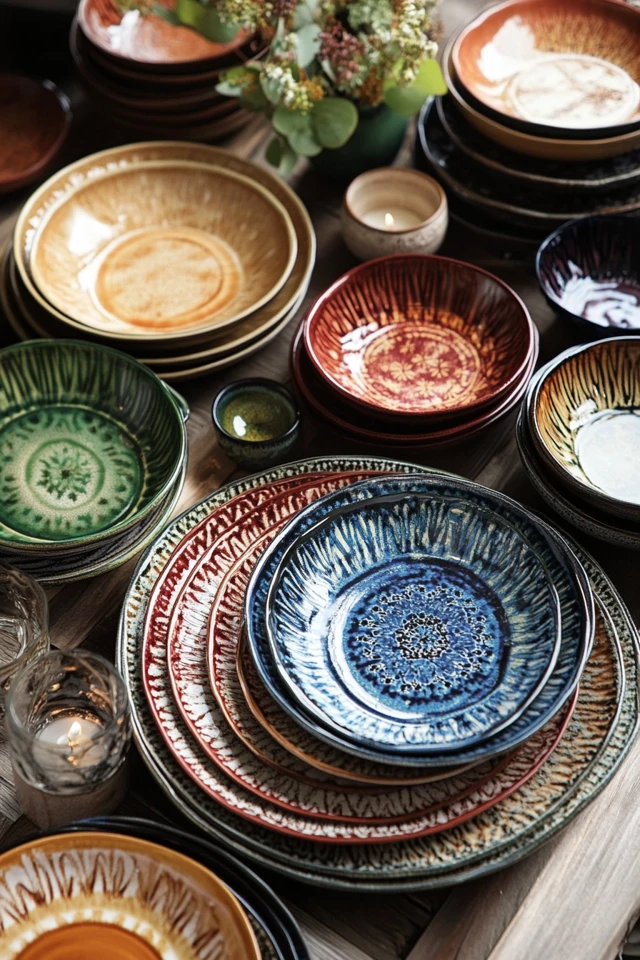
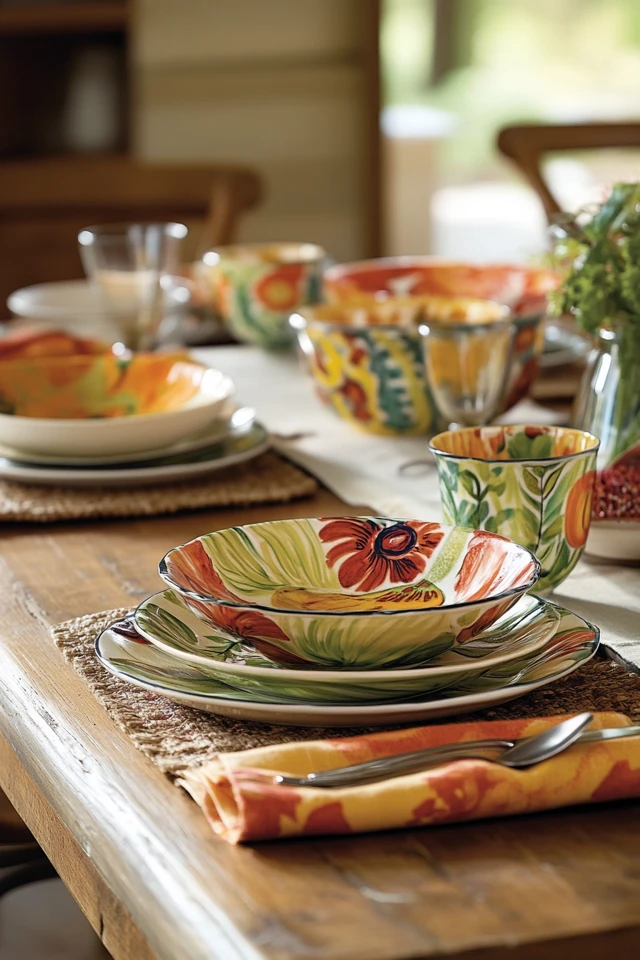
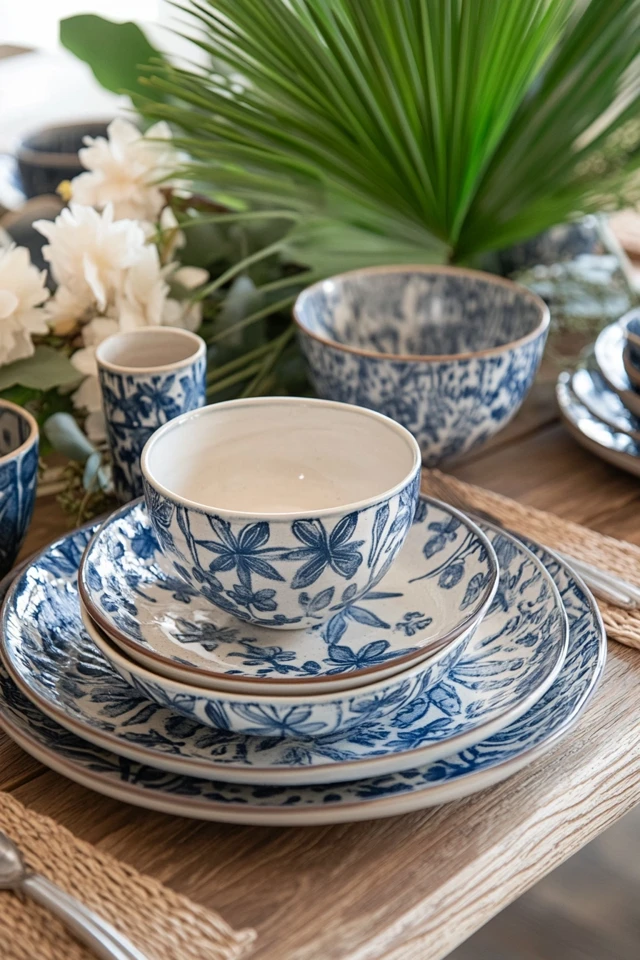
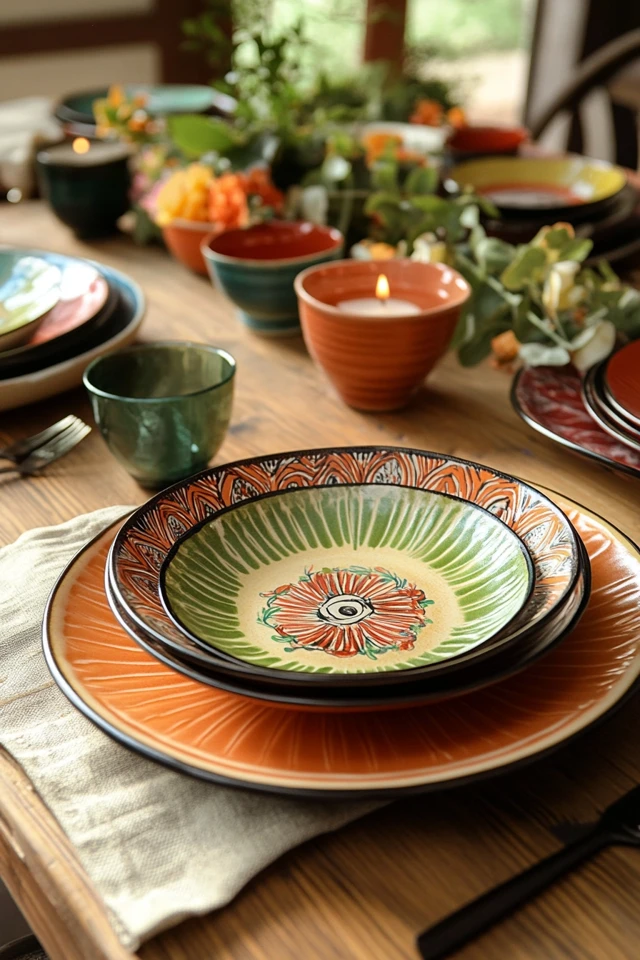
Why These Key Elements Work So Well Together
Farmhouse dinnerware and rustic tablescapes are a match made in design heaven because they share a focus on natural beauty, functionality, and timeless appeal. Here’s why these elements work so beautifully:
- Neutral Tones: Farmhouse dinnerware typically features whites, creams, and muted colors that blend seamlessly with rustic decor.
- Textural Contrast: Mixing materials like ceramic, stoneware, and wood adds depth and interest to your table.
- Handcrafted Feel: Vintage and artisanal pieces bring character and authenticity to the setting.
- Versatility: Farmhouse dinnerware is easy to pair with seasonal accents and a variety of table linens.
- Layered Design: Combining different shapes, sizes, and patterns creates a visually dynamic tablescape.
How to Mix and Match Farmhouse Dinnerware for Rustic Tablescapes
1. Start With a Neutral Base
- Design: Begin with a set of white or cream-colored plates as your foundation.
- Why It Works: Neutral tones provide a versatile canvas that complements a variety of colors and patterns.
- Styling Tips: Choose plates with subtle textures or details, like scalloped edges or embossed designs, for added interest.
2. Incorporate Vintage or Mismatched Pieces
- Design: Add vintage plates, bowls, or saucers with floral or toile patterns to introduce charm and character.
- Why It Works: Mismatched pieces bring a relaxed, eclectic vibe to the table.
- Styling Tips: Look for pieces in complementary colors or designs to maintain a cohesive look.
3. Layer With Charger Plates
- Design: Use wooden, woven, or metal chargers to frame your dinnerware and add texture.
- Why It Works: Chargers provide a rustic foundation that ties the entire tablescape together.
- Styling Tips: Choose chargers in natural tones like brown or bronze for a farmhouse-inspired touch.
4. Mix Textures and Materials
- Design: Combine ceramic plates with stoneware bowls, wooden serving trays, and glassware for a layered look.
- Why It Works: The variety of textures creates depth and visual interest, enhancing the rustic aesthetic.
- Styling Tips: Stick to a consistent color palette to keep the table cohesive despite the mix of materials.
5. Play With Shapes and Sizes
- Design: Use round dinner plates, square salad plates, and oval serving dishes to add variety.
- Why It Works: Mixing shapes creates a more dynamic and engaging table setting.
- Styling Tips: Ensure the sizes of the pieces are proportional to maintain balance.
6. Incorporate Seasonal Colors
- Design: Add pops of color through salad plates, napkins, or decorative accents that reflect the season.
- Why It Works: Seasonal colors keep your tablescape fresh and relevant.
- Styling Tips: For fall, try muted oranges and browns; for spring, use soft pastels or greens.
7. Use Natural Elements
- Design: Add wooden utensils, linen napkins, or dried floral arrangements to complement the farmhouse dinnerware.
- Why It Works: Natural materials enhance the rustic theme and add warmth to the table.
- Styling Tips: Place a small sprig of rosemary or lavender on each plate for an extra touch of charm.
8. Incorporate Glass and Metal Accents
- Design: Use mason jar glasses, vintage silverware, or hammered metal goblets to elevate the setting.
- Why It Works: These elements add shine and contrast while maintaining a farmhouse aesthetic.
- Styling Tips: Pair antique silverware with ceramic plates for a mix of old and new.
9. Create a Cohesive Centerpiece
- Design: Use simple centerpieces like a wooden tray with candles, a vase of wildflowers, or a collection of small potted plants.
- Why It Works: A cohesive centerpiece ties the table together and enhances the rustic vibe.
- Styling Tips: Keep the centerpiece low to allow for conversation across the table.
10. Embrace Imperfection
- Design: Don’t worry about every piece matching perfectly—embrace the imperfections and unique details of each item.
- Why It Works: The mix-and-match approach is all about creating a casual, welcoming atmosphere.
- Styling Tips: Focus on creating harmony through color and texture rather than uniformity.
How to Style Your Rustic Tablescape
- Layer Dinnerware: Start with chargers, then add dinner plates, salad plates, and bowls for a multi-dimensional look.
- Add Soft Linens: Use linen tablecloths, runners, or napkins in neutral tones to create a cozy base.
- Use Height Variation: Incorporate candlesticks, vases, or tiered serving trays to add height and interest.
- Balance Colors: Stick to a cohesive palette of earthy tones, whites, and muted colors for a farmhouse-inspired look.
- Personalize Each Setting: Add name cards, small gifts, or unique details to make each place setting feel special.
FAQ Section
1. Can I mix dinnerware with different patterns?
- Yes! Look for patterns with complementary colors or themes, like florals and stripes, to keep the look cohesive.
2. How many layers of dinnerware should I use?
- Three layers (charger, dinner plate, and salad plate or bowl) are typically enough to create depth without overcrowding the table.
3. Can I use everyday dishes for a rustic tablescape?
- Absolutely! Everyday dishes in neutral tones or simple patterns can easily be elevated with farmhouse accents like chargers and linens.
4. How do I keep mismatched dinnerware from looking chaotic?
- Stick to a consistent color palette or style, and use coordinating accents like napkins or centerpieces to tie everything together.
5. What’s the best way to clean vintage or handmade dinnerware?
- Hand wash delicate pieces with mild soap and avoid the dishwasher to preserve their finish and integrity.
Variations
- Rustic Farmhouse Tablescape: Focus on earthy tones, wooden chargers, and vintage-inspired plates.
- Modern Farmhouse Tablescape: Use sleek, minimalist plates paired with subtle farmhouse accents like linen napkins.
- Coastal Farmhouse Tablescape: Incorporate soft blues, whites, and natural elements like shells or driftwood.
- Boho Farmhouse Tablescape: Add colorful patterned plates, macramé runners, and mismatched textures.
- Holiday Farmhouse Tablescape: Use seasonal colors, greenery, and festive accents like pinecones or ornaments.
How to Showcase It
- Before-and-After Photos: Highlight the transformation of your table with a mix-and-match farmhouse setting.
- Seasonal Displays: Show how you adapt your dinnerware for holidays or different times of the year.
- Close-Up Shots: Capture the textures, patterns, and layers of your dinnerware to inspire others.
Occasions to Feature It
- Family Dinners: Elevate weeknight meals with a thoughtfully styled farmhouse tablescape.
- Holiday Feasts: Create a festive table that’s perfect for Thanksgiving, Christmas, or Easter.
- Casual Gatherings: Impress guests with a relaxed yet polished setting for brunches or potlucks.
Conclusion
Mixing and matching farmhouse dinnerware is an art that allows you to create a unique and welcoming table setting for any occasion. By blending textures, colors, and patterns, you can craft rustic tablescapes that reflect your personal style and set the perfect tone for your gatherings.
Whether you’re hosting a formal dinner party or enjoying a casual family meal, these tips will help you design a table that’s as inviting as it is beautiful. Start experimenting today, and watch as your farmhouse-inspired tablescape becomes the centerpiece of unforgettable moments and conversations.

